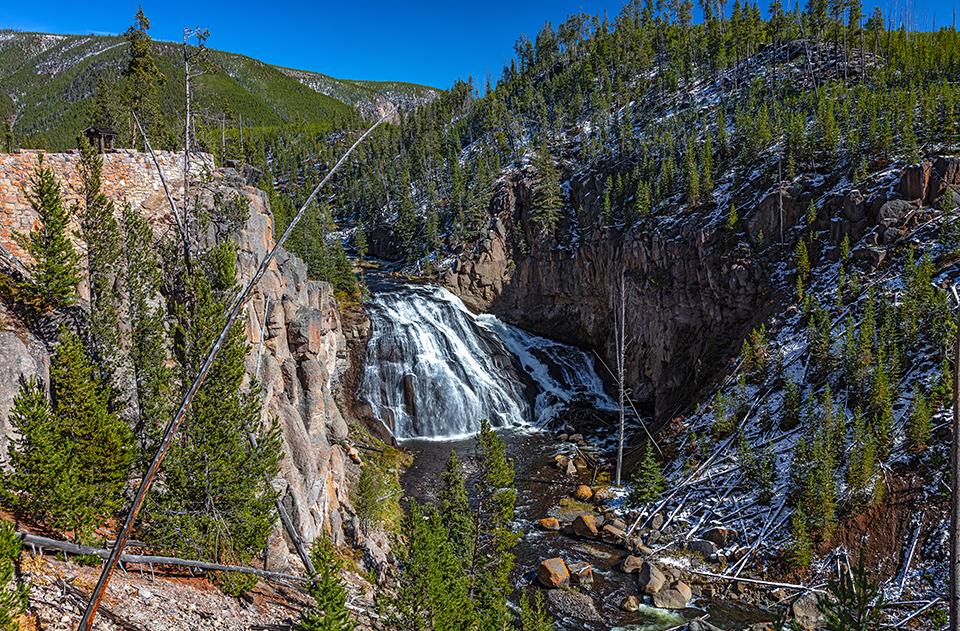
Gibbon Falls, Yellowstone National Park / Rebecca Latson
Waterfall or waterfalls? Which is which? FYI, the difference depends upon which website you are looking at. Quite a few sites say the terms are interchangeable, but some sites make the differentiation by indicating a waterfall is a single stream of water, while waterfalls are several distinct cascades that make up that falling water. An example of a waterfall is Yosemite National Park’s Horsetail Fall, famous for appearing to be on fire when it reflects the orange glow of sunset in mid- to late-February. An example of waterfalls is Yellowstone National Park’s Gibbon Falls, which “drops 84 feet over a remnant of the Yellowstone caldera rim.”
Back in 2008, Professor Robert Janiskee penned a waterfall quiz. I tried to create new questions for you with this quiz, but variations of a couple of Professor Janiskee’s items do appear here.
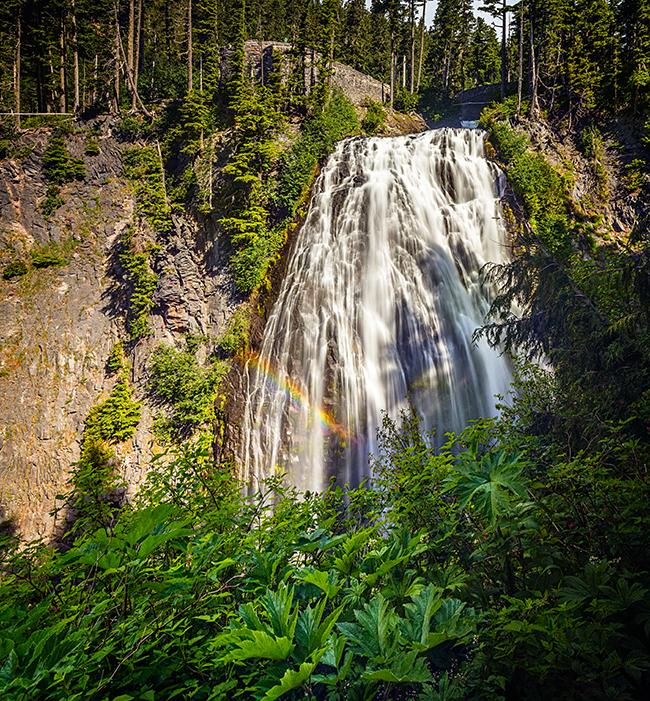
Narada Falls, Mount Rainier National Park / Rebecca Latson
1. Narada Falls in Mount Rainier National Park plunges 168 feet over a lava flow comprised of which volcanic rock?
a) dacite
b) rhyolite
c) basalt
d) andesite
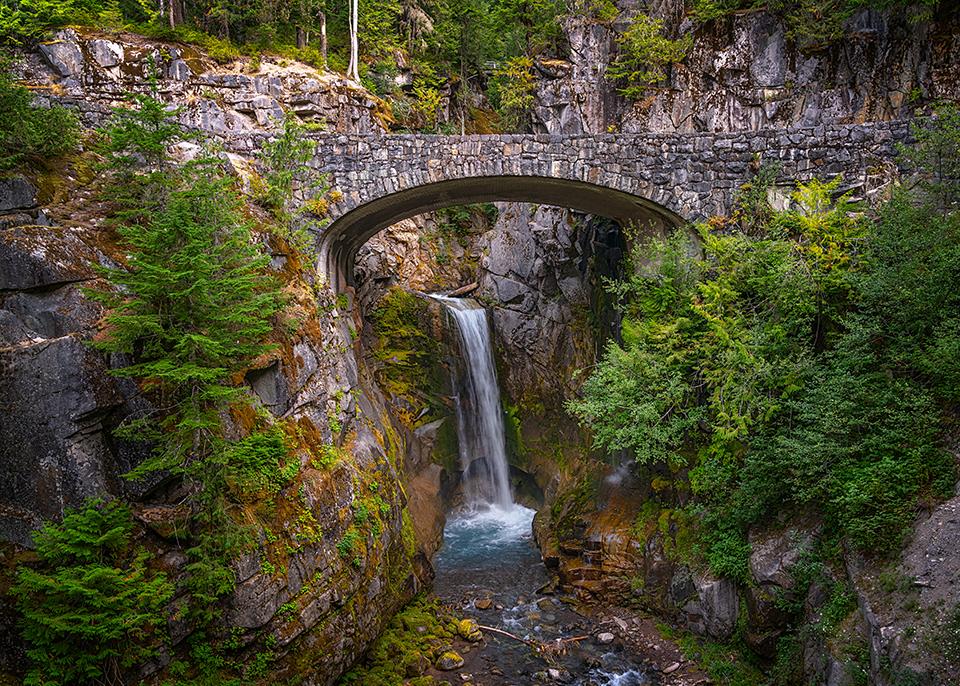
Christine Falls, Mount Rainier National Park / Rebecca Latson
2. Christine Falls and Comet Falls in Mount Rainier National Park get their water from the same source:
a) Paradise River
b) Edith Creek
c) Van Trump Creek
d) Stevens Creek
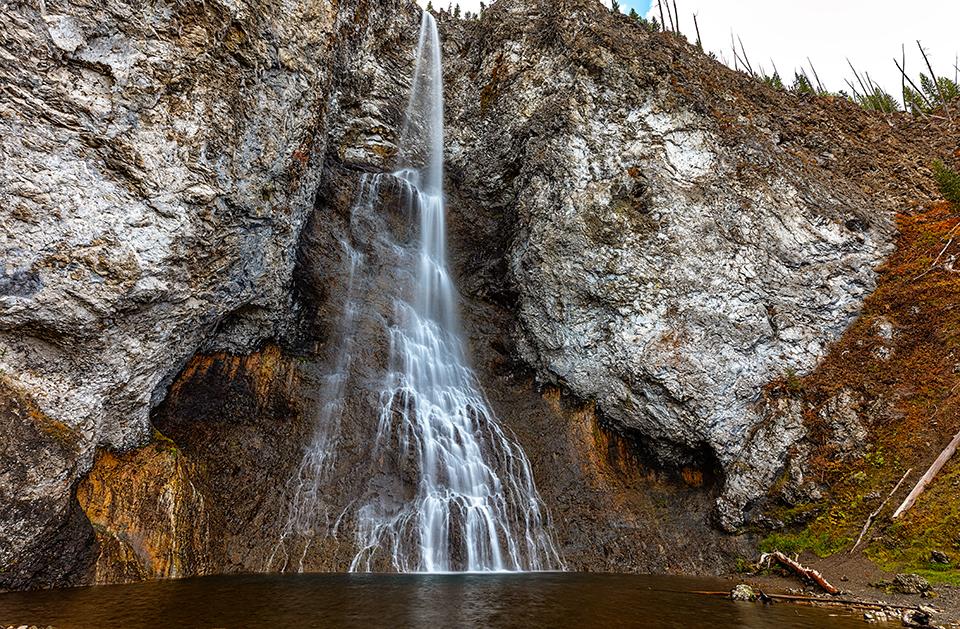
Fairy Falls, Yellowstone National Park / Rebecca Latson
3. A number of waterfalls in Yellowstone National Park are found practically next to the road or a few steps from a parking area. Of these falls near a road or parking area, which one is the tallest?
a) Firehole Falls
b) Fairy Falls
c) Lower Falls of the Yellowstone River
d) Tower Fall
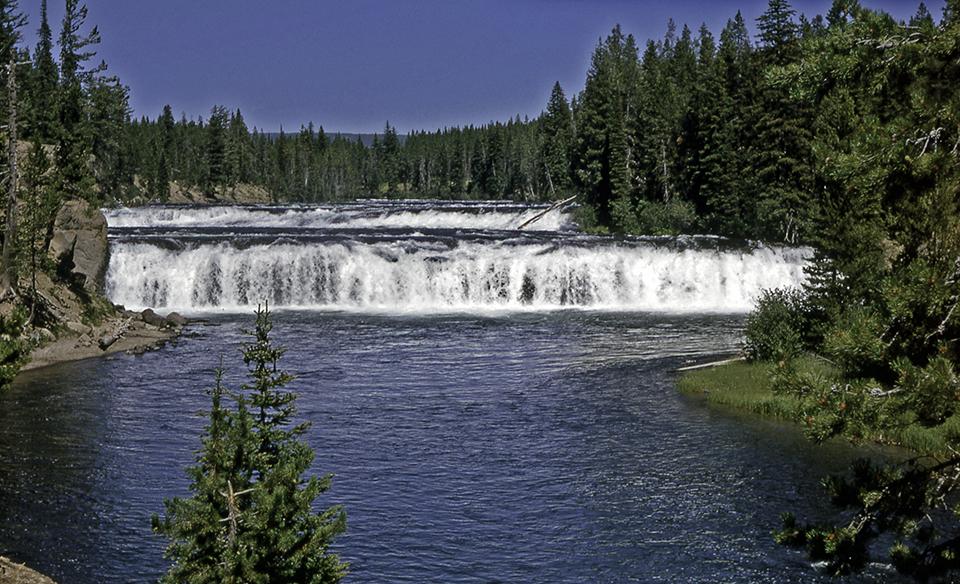
Cave Falls, Yellowstone National Park / NPS-Harry Bryan
4. Cave Falls in Yellowstone National Park is an example of which waterfall category?
a) block
b) plunge
c) horsetail
d) fan

Saint Mary Falls, Glacier National Park / Rebecca Latson
5. Glacier National Park has how many named waterfalls?
a) 27
b) 33
c) 42
d) 55

Weeping Wall, Glacier National Park / Rebecca Latson
6. True or False: The Weeping Wall series of waterfalls along Going-to-the-Sun Road in Glacier National Park are “man-made.”
a) True
b) False
7. True or False: Acadia National Park’s Hadlock Falls is not a year-round waterfall.
a) True
b) False
8. Yosemite National Park is not the only park unit to have a waterfall named “Bridalveil” or “Bridal Veil.” Of the list below, which other park has a waterfall with the same name?
a) Rocky Mountain National Park
9. Whiskeytown National Recreation Area has four major waterfalls, or cascades. Of these, which one was actually moved from its original position?
a) Whiskeytown Falls
b) Boulder Creek Falls
c) Brandy Creek Falls
d) Crystal Creek Falls
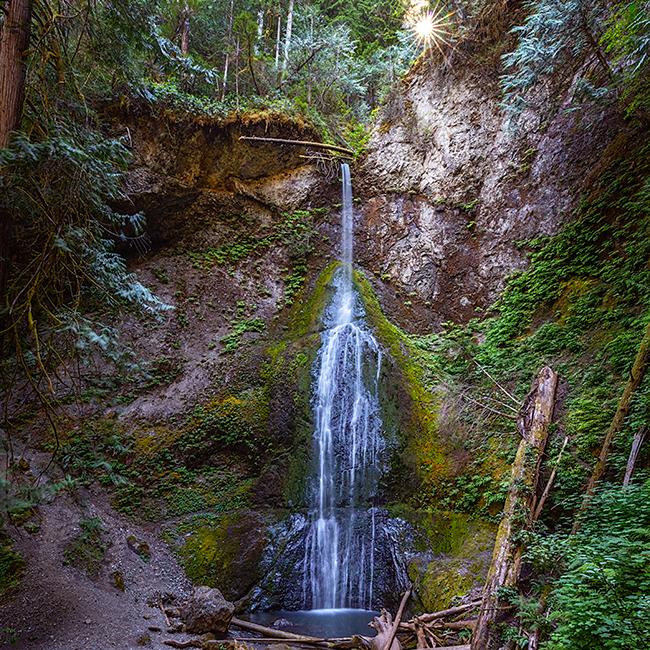
Marymere Falls, Olympic National Park / Rebecca Latson
10. Marymere Falls in Olympic National Park, is how tall?
a) 60 feet tall
b) 70 feet tall
c) 80 feet tall
d) 90 feet tall
Trivia
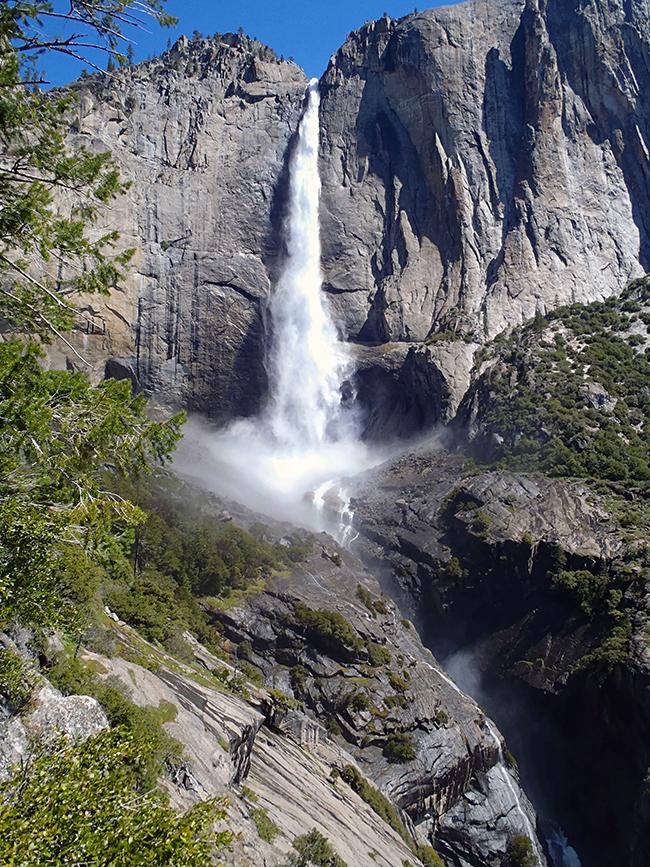
Yosemite Falls, an example of a hanging-valley waterfall, Yosemite National Park / NPS-James Miller
Many of Yosemite National Park’s most scenic waterfalls are the result of a geological feature known as a hanging valley. “When Pleistocene glaciers quarried out Yosemite Valley, they transformed it from a steep, V-shaped river canyon into a flat-floored, steep-sided trough. Tributaries of the Merced River flowing into the valley were not so intensively eroded, and therefore they terminate at sheer cliffs plunging down to the floor of the main drainage. These truncated courses are called “hanging valleys,” and the water free-falling off them into Yosemite Valley creates some of the park’s best-known cataracts. Examples of these hanging-valley waterfalls are 2,425-foot Yosemite Falls, 1,612-foot Ribbon Fall, 620-foot Bridalveil Fall, and 370-foot Illilouette Fall. Over in the Hetch Hetchy Valley, ice-sculpted in much the same way as Yosemite, 1,400-foot Wapama Falls also marks a hanging valley.”
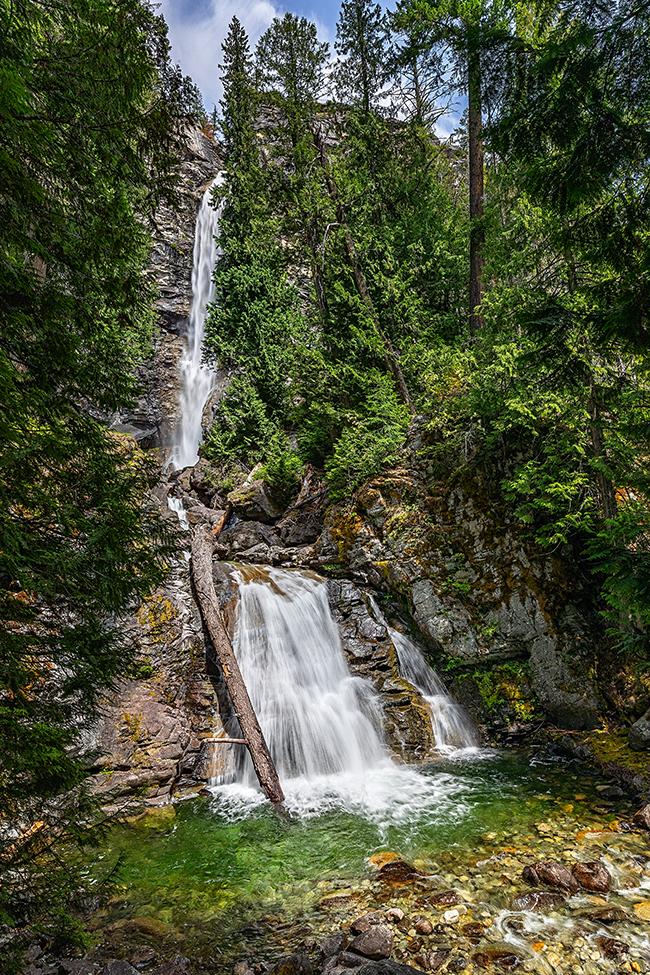
Rainbow Falls, North Cascades National Park Complex / Rebecca Latson
“Rainbow Falls drops 312 feet in the Stehekin Valley within the North Cascades National Park Complex. Flowing year-round from its headwaters near McAlester Mountain and Dee Dee Lakes, the falls is largest during spring runoff, usually in May and June. Taking turns during great ice ages during the past 2.6 million years, ice from both massive continental glaciers stretching from an ice sheet in Canada and from smaller local valley glaciers shaped the mountains, valleys, and what became Lake Chelan. The ice from the continental ice sheet entered Stehekin Valley by flowing down through Rainbow Creek Valley above you. This massive ice sheet in Stehekin Valley cut more deeply than glaciers in smaller tributaries and as a result, tributaries like Rainbow Creek were left as hanging valleys. As the ice melted away, ancient Rainbow Creek became blocked by massive leftover boulders and gravel from the lobe of the continental ice sheet. The creek blindly cut through the rubble before it tumbled over the edge of a hanging valley to free fall to the Stehekin Valley floor, creating the waterfall we see today.”
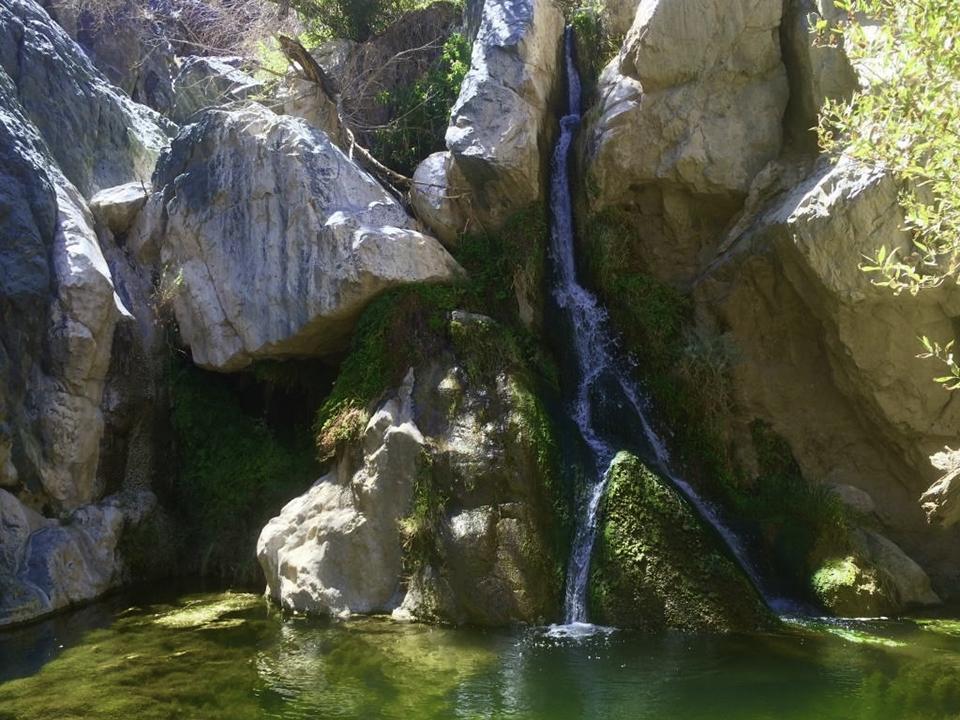
Darwin Falls, Death Valley National Park / Christine Salomon
“Darwin Falls is one of only a handful of year-round waterfalls in Death Valley National Park. The spring-fed water creates a truly special environment, allowing for the growth of trees, cattails, aquatic vegetation, and even ferns. Amphibians such as tree frogs and toads complete part of their life cycle in these waters, and wildlife including bighorn sheep depend on the water’s flow for survival. Humans have also used this water for hundreds of years, and hikers may notice a metal pipe carrying water from the stream below the falls. Please do not enter the pool, as it is the drinking source for nearby Panamint Springs Resort.”
Quiz Answers
1d
Narada Falls plunges 168 feet over an andesite lava flow to the valley floor. On a sunny day, a colorful rainbow may add a bit of magic to the falls.
2c
Christine Falls’ and Comet Falls’ water source is from Van Trump Creek. Oh, and Van Trump Falls gets its water from this creek, too, but I didn’t list it because it would have been a giveaway, don’t you think?
3c
The tallest waterfall near a road is the Lower Falls of the Yellowstone River at 308 feet (94 m). Firehole Falls has a drop of about 40 feet, Fairy Falls is nearly 200 feet tall, and Tower Fall is 132 feet tall.
4a
According to world-of-waterfalls.com, Cave Falls, located in the Belcher area of Yellowstone National Park (WY-ID border) is an example of the block category. Click here to learn more about waterfall categories.
5c
According to the National Park Service, Glacier has 42 named waterfalls in addition to numerous unnamed falls. The named list includes such well-known bodies of water as Bird Woman Falls, Apikuni Falls, Redrock Falls, St. Mary Falls, Running Eagle Falls, Baring Falls, Virginia Falls, Florence Falls, Ptarmigan Falls, Haystack Falls, and Swiftcurrent Falls.
6a True
Get outta town! Man-made? This video on Glacier’s website explains it.
7a True
Hadlock Falls is a waterfall only seen during spring melt or heavy rains. As a matter of fact, Waterfall Bridge, one of 16 carriage roads across John D. Rockefeller's carriage road system, is named for its views of Hadlock Falls, a video of which you can see here.
8a
Rocky Mountain National Park has a Bridal Veil Falls, and actually, so does Cuyahoga Valley National Park.
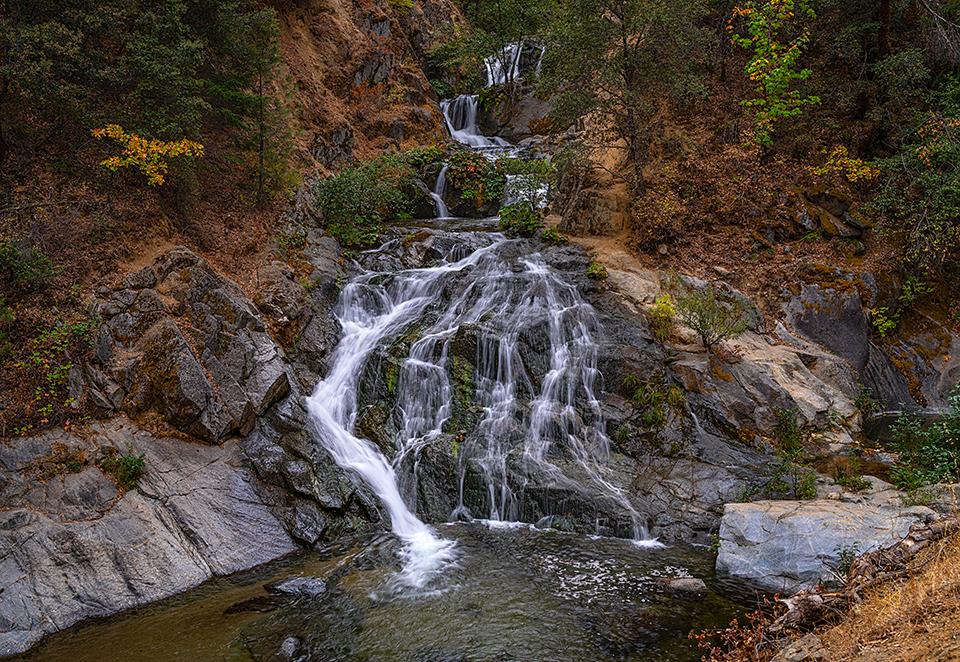
Crystal Creek Falls, Whiskeytown National Recreation Area / Rebecca Latson
9d
“Crystal Creek Falls was moved to its present location in the early 1960s to make way for the Trinity River diversion tunnel. Prior to this time, the small waterfall was located directly where the small valve house building now stands (looking at the waterfall from the end of the paved trail, the building is just to your right). The diversion tunnel runs 10 miles and dumps water into Whiskeytown Lake via the Judge Francis Carr Powerhouse. When it is necessary to dewater the tunnel for maintenance, the valve is turned off and the excess water from the tunnel spills into Crystal Creek.”
10d
Marymere Falls is 90 feet tall and is accessed by a 0.7-mile (one-way) trail just east of the Storm King Ranger Station. The trail climbs 200 feet in elevation, crossing two bridges to a set of steep stairs that lead to two different viewing platforms.
References
In addition to the information found within each national park’s website, the following references were also used:
https://www.world-of-waterfalls.com/what-types-of-waterfalls-are-there/
https://www.scenicwonders.com/blog/the-story-behind-yosemites-great-waterfalls



Comments
Thanks for your work on these quizzes, Rebecca! It had never occurred to me that construction could relocate waterfalls. The west tunnel on Mount Rainier's Stevens Canyon Road is the location a seasonal feature called 'Car Wash Falls' by park employees. It is usually dry by the time this road opens to the public each year.